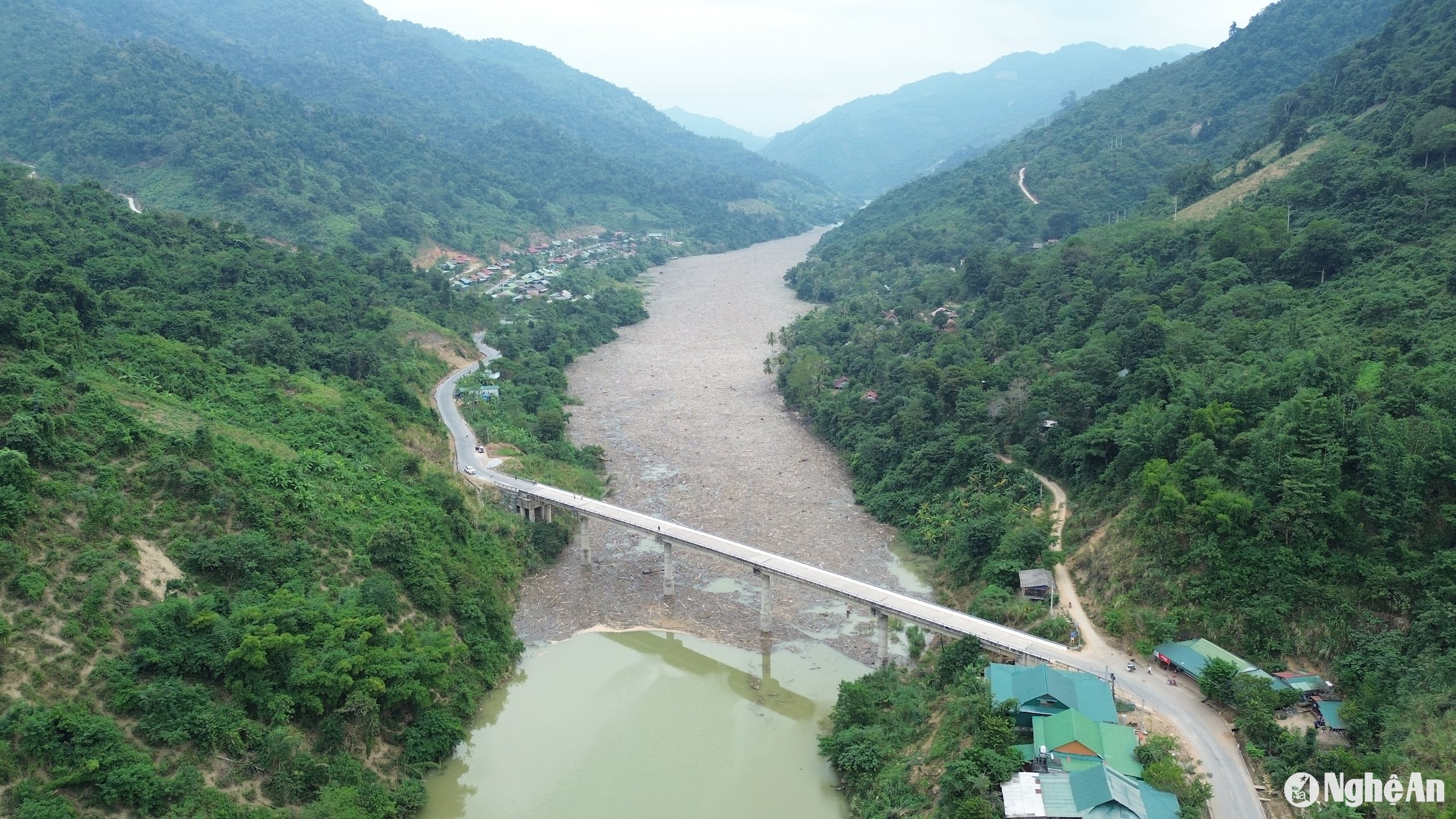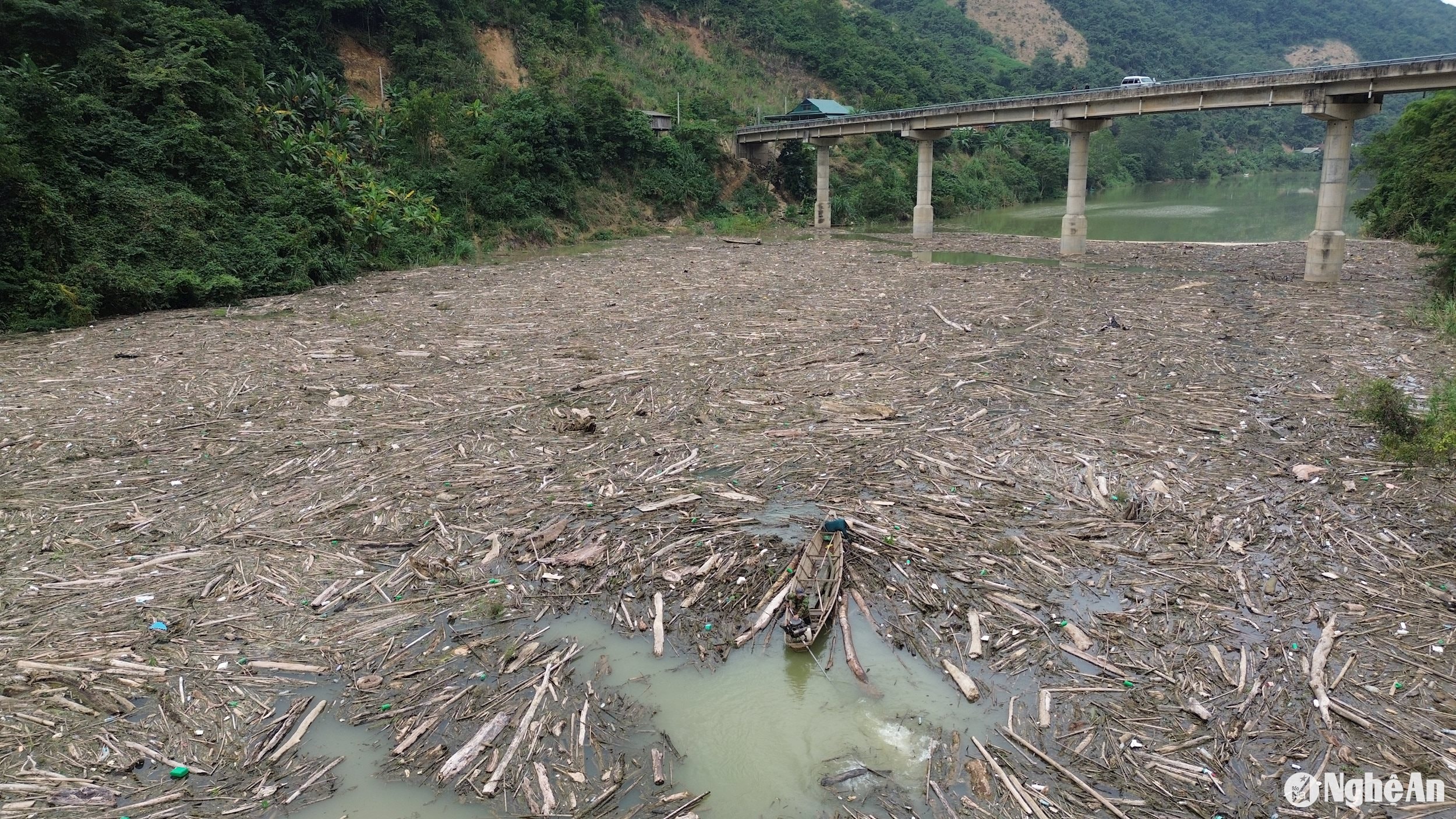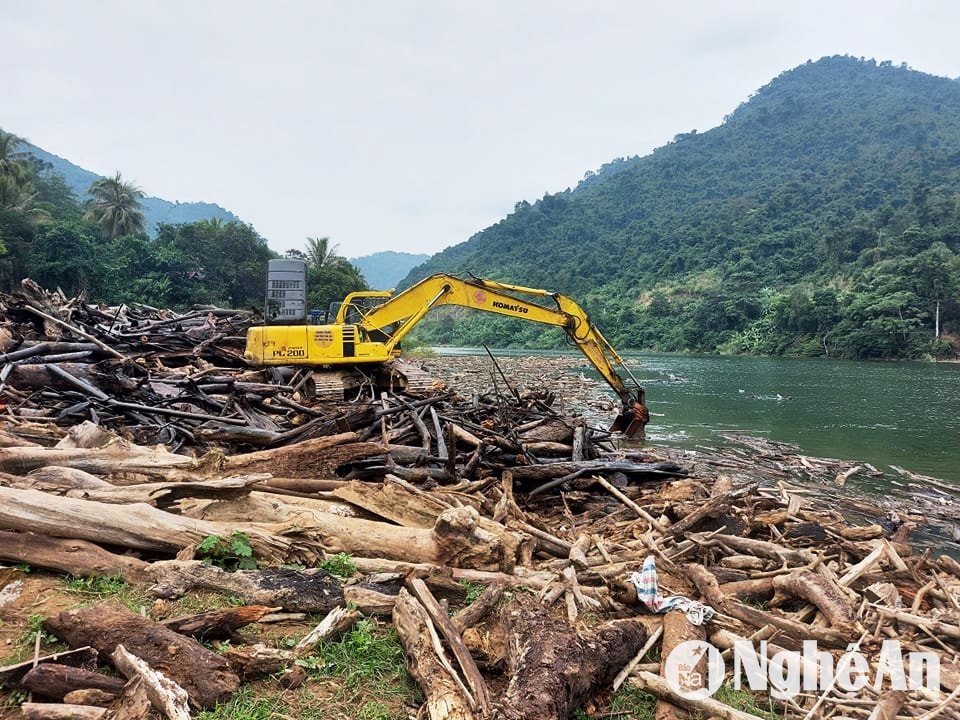Ban Ve Hydropower Company implements plan to collect and treat waste in reservoir area
With a large amount of garbage pouring into the reservoir area after the flood, Ban Ve Hydropower Company has coordinated with Nghe An Urban Environment and Construction Joint Stock Company to deploy a collection and treatment plan.
In recent years, after every rainy season, a huge amount of garbage is brought to the Ban Ve hydroelectric reservoir. This not only affects waterway traffic but also pollutes the environment, directly threatening the ecosystem and water resources.
According to actual records, a large amount of waste is currently concentrated on the Nam Non River, in Hoa Ly village, My Ly commune, Ky Son district. The amount of waste covers the riverbed for about 1.5km from Nam Non bridge (on route Km350+384 on National Highway 16), downstream. It is estimated that the amount of waste can reach 7000-8000m3This has greatly affected the lives of local people.

Engineer Nguyen Van Ngoc - in charge of hydrology of Ban Ve Hydropower Company said: The garbage gathered in My Ly commune (Ky Son) recently is mainly miscellaneous wood, bamboo and most dangerous is plastic waste brought in by floods from upstream. After the water level in the reservoir rises, the garbage is carried by water and wind to this area.
Faced with this reality, to clean up the environment, Ban Ve Hydropower Company signed a contract with Nghe An Urban Environment and Construction Joint Stock Company to collect and treat waste from the reservoir bed, to ensure the safety of the key works and traffic safety.
According to the waste treatment plan established by Nghe An Urban Environment and Construction Joint Stock Company, after being collected, the waste will be gathered at the alluvial land in the semi-flooded area in Hoa Ly village. Then, it will be given priority to households in the area and units that need to use it, making use of it as raw materials and fuel (mainly mixed wood and bamboo). The remaining volume will be processed according to the treatment process. The waste treatment is carried out in parallel with the collection process.

To ensure safety in waste treatment, especially in forest fire protection and prevention and environmental sanitation, on November 28, 2024, the People's Committee of Ky Son district issued Document No. 2017/UBND-TNMT requesting Ban Ve Hydropower Company (investor) and the construction unit, Nghe An Urban Environment and Construction Joint Stock Company, and related units to strictly implement a number of contents.
In particular, it is necessary to notify specific time and regularly coordinate closely with the People's Committee of Ky Son district, the Forest Protection Department of Ky Son district and the People's Committee of My Ly commune in the work of handling garbage at the gathering location, especially the work of protecting, preventing forest fires, environmental sanitation and ensuring the safety of other properties of people near the area. It is necessary to handle garbage after collection in the right location...
The People's Committee of Ky Son district also requested relevant departments and offices such as the Department of Natural Resources and Environment, Ky Son Forest Protection Department, My Ly Commune People's Committee... to coordinate in organizing inspections of garbage collection and treatment in the right locations, ensuring environmental sanitation in the lake area and at the garbage collection site.

At the same time, propagate and notify households, individuals and organizations not to enter the garbage collection area during the treatment process to ensure absolute safety for people and property.
It can be seen that, with more than 5,000 hectares of water surface, and a capacity of 1.83 billion m3Water, the Ban Ve hydroelectric reservoir area (located on the Nam Non river stretching from Tuong Duong district to Ky Son) plays a very important role in regulating water and protecting the environment of the area. In particular, this is also a place with favorable conditions for people to promote aquaculture. Therefore, collecting the huge amount of waste flowing from upstream to the reservoir will contribute to protecting the environment, restoring and regenerating aquatic resources that are currently declining, helping people in the reservoir area stabilize production and develop a sustainable economy.
